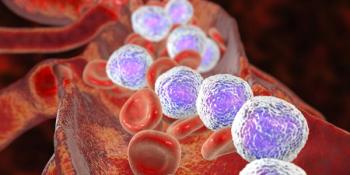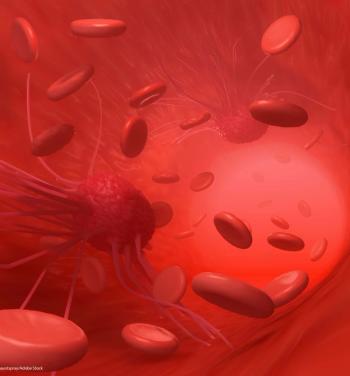
Oncology NEWS International
- Oncology NEWS International Vol 7 No 8
- Volume 7
- Issue 8
Octreotide Imaging Improves Staging of Hodgkin’s Disease
TORONTO--In a study of newly diagnosed patients with Hodgkin’s disease, nuclear medicine imaging detected advanced disease in a significant portion of patients originally classified as having only stage I or II disease. These patients were imaged using indium-111 octreotide (OctreoScan), also known as somatostatin-receptor scintigraphy.
TORONTO--In a study of newly diagnosed patients with Hodgkins disease, nuclear medicine imaging detected advanced disease in a significant portion of patients originally classified as having only stage I or II disease. These patients were imaged using indium-111 octreotide (OctreoScan), also known as somatostatin-receptor scintigraphy.
"Patients with limited Hodgkins disease, stage I or II (confined to the lymph nodes), can be cured with regional radiotherapy. However, in about 30% of these cases, relapses occur with tumors located outside of the original radiation field," said Elly Lugtenburg, MD, Department of Hematology, University Hospital Rotterdam. "We concluded that the noninvasive staging procedures that are used in these patients are not optimal."
Speaking at the 45th annual meeting of the Society of Nuclear Medicine, Dr. Lugtenburg reported the results of a Dutch study involving 126 patients with newly diagnosed Hodgkins disease. All underwent scintigraphy after IV injection of OctreoScan. Among these 126 patients were 88 who had been classified as either stage I or II, and 82 of these patients were eligible to continue in the study.
Original classification by standard staging techniques had separated these patients into two subsets: 38 with a favorable prognosis and 44 with an unfavorable prognosis, based on prognostic factors such as age, sex, erythrocyte sedimentation rate, and B symptoms. All of these patients had positive nuclear medicine scans.
Scintigraphy Results
In normal treatment procedures, the favorable patients would receive regional radiotherapy (subtotal nodal irradiation) while the unfavorable patients would receive standard systemic chemotherapy, as do all stage III and IV patients. But scintigraphy led to findings in several patients that could change these treatment decisions.
In 22 (57%) of the 38 favorable patients and 16 (36%) of the 44 unfavorable patients, scintigraphy revealed addition lesions that were missed during standard staging. Only two lesions were missed by OctreoScan scanning.
Seven favorable patients (18%) were upgraded to stage III or IV. Of these patients, four had disease below the diaphragm and three had extranodal disease. "In particular," Dr. Lugtenburg said, "the three patients with extranodal disease were most likely patients who would have relapsed if they had received standard radiotherapy. These patients have a better prognosis if treated directly with chemotherapy."
Of the 44 unfavorable patients, 7 (16%) were upgraded to stage III or IV, justifying the chemotherapy they received. In the remaining 37 (84%), no evidence of additional disease was found. These patients did not appear to require chemotherapy as the standard staging suggested, since they may have had truly limited disease (stage I or II).
The investigators recommend that somatostatin-receptor scintigraphy be considered as a staging tool for all newly diagnosed Hodgkins disease patients to help physicians select the appropriate treatment plan. "The relatively high cost of somatostatin-receptor scintigraphy is outweighed by its ability to select patients who would benefit more from chemotherapy instead of only subtotal nodal irradiation," Dr. Lugtenburg said.
Articles in this issue
about 27 years ago
Taxol, Gemzar, Other Therapies Studied in Metastatic Bladder Cancerabout 27 years ago
Medicare+Choice Opens Certificationabout 27 years ago
Consumer Advocates Win a Voice in NCI Programsabout 27 years ago
Paclitaxel Shows Antiangiogenesis Effects in Mouse Modelabout 27 years ago
Henney Nominated for FDA Commissionerabout 27 years ago
FDA Approves ImageChecker Computer Systemabout 27 years ago
Pittsburgh Seeks Breast Cancer Patients for Study on Copingabout 27 years ago
Tobacco Contributions Are Linked to Votes Against Tobacco Billabout 27 years ago
Kaposi’s Sarcoma, Cervical Dysplasia Both Improve With Anti-HIV Therapyabout 27 years ago
Long-Term Treatment Issues Surface at AIDS MeetingNewsletter
Stay up to date on recent advances in the multidisciplinary approach to cancer.



















































































